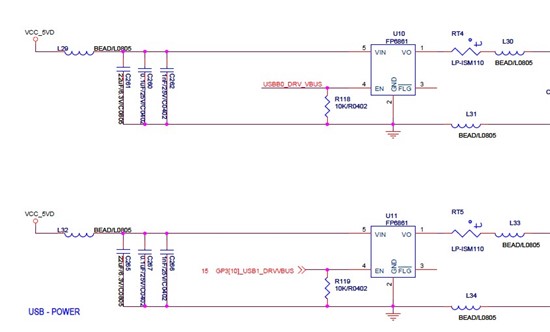Hi Pavel,
Our custom board have two usb host port .But there both are no voltages on pin1.
According to the circuit diagram, I know I need enable the power control pin by set GPIO pins to 1.
But I don't know where to set the pins in kernel.
Would you please tell me how to set?
Thank you
Attached figure is the circuit diagram.
Bob




